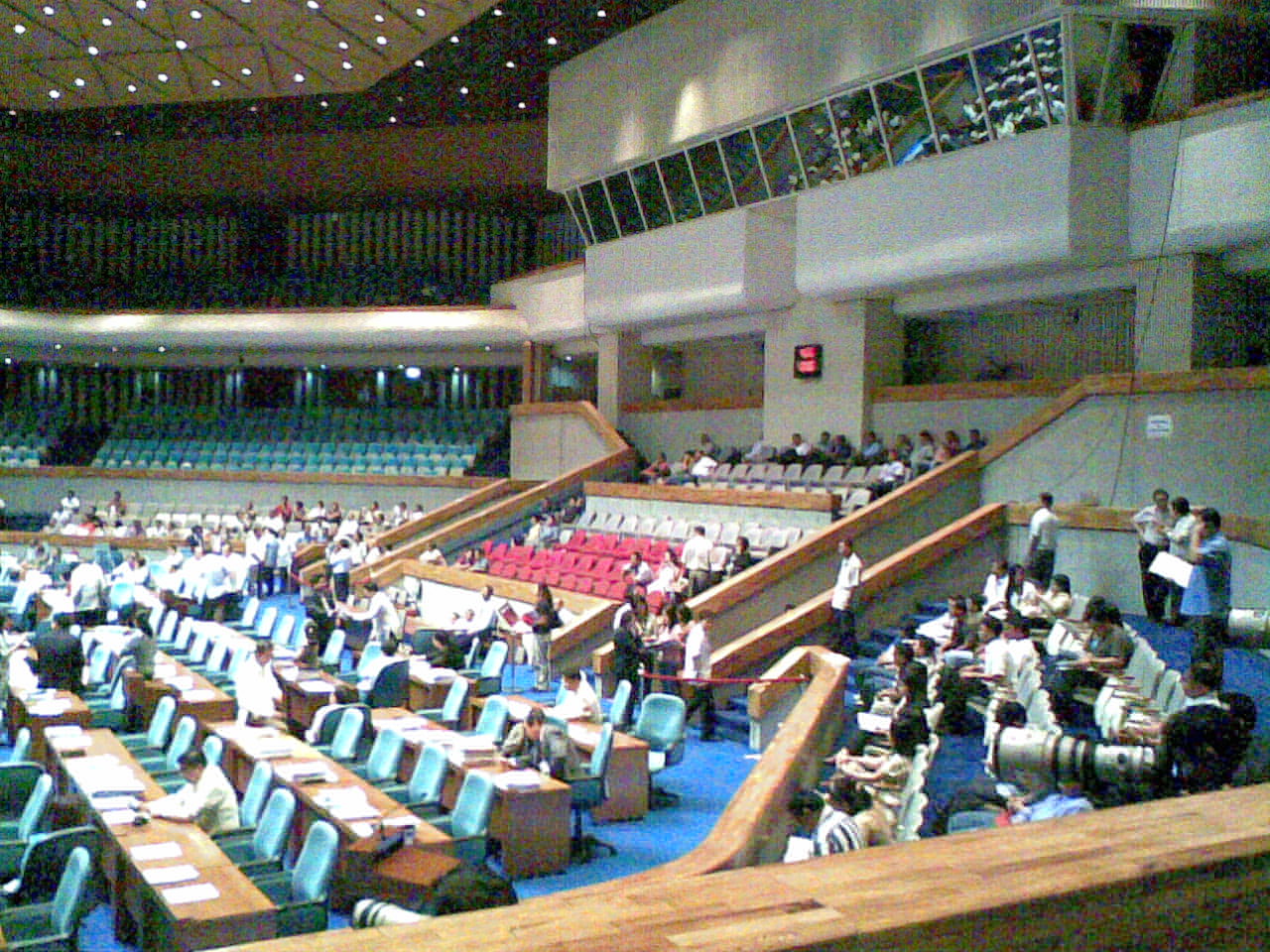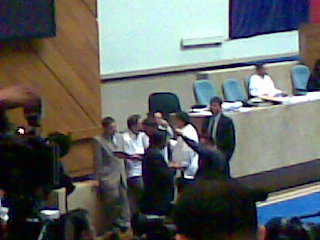






|
|
|
June 7, 2008 The Route to a Remarkable Writing (for Rascals)The child is a special kind of person, though adults think otherwise. He is like a blank slate waiting for someone to write on him. He is like a flower that needs to be talked to every morning and to be watered everyday. He is like a puppy that needs constant petting from his master. Sometimes, he can be the deadliest critic or judge of others, especially the grownups; but most of the time, he acts like a wet rag absorbing all that he learns from the adults around him. When you decide to write for children, you are taking the responsibility of providing the love, care, and attention the child continuously needs during this phase in his life. I assumed such responsibility, thinking that it is way easier than what I have been doing in my journalism classes, that I would have a break this time from the fact-driven world of news, and that doing something that concerns children, altogether amusing as they are, will make summer classes less stressing. Besides, it is one of my long-term goals to write a children’s book, having gotten inspiration from featured authors in newspapers. I thought then that like teaching in a public school, writing a children’s storybook is a very noble thing to do. The Writing Process The writing process involving children’s literature is not unlike any other writing process. You go through a planning stage which, for me, meant studying very well the things said in class regarding children’s interests, preferences, and needs. And then you’d have to be in a decision-making stage/s. As for me, I had spent so much time thinking of: (1) which story nugget should I pursue, since my group mates in the workshop had different suggestions; (2) what form of literature should I take; (3) if there is someone who’ll be willing to draw for me, because if there’s none, then I would have to make do of a simple story; (4) which point of view to take; and (5) what kind of books to refer to since I decided on a historical fiction type of literature. And then you’d begin your first draft. Mine was really a draft. I stuck to my idea of using animals to lure children to read my story. I just typed and typed whatever came to mind, only to find out that the plot is very improbable and that children look for logic even in magic. I wasn’t happy with how the first draft of my story came to be, which is pretty normal as we were told. Doing the poems became a little easier after going through a “diagnostic test” (i.e. first draft of the story) in this course. Having the writer’s block is also part of the process. And overcoming it is vital, indeed. I have experienced sitting on a single poem the whole day and end that day writing nothing decent at all. What’s worse is that ideas start pouring in when it’s already late at night, and I’d have to sleep or otherwise be late for next day’s class. I attempt to break the ice, once in a while, by leaving my writing to do other things. I eat, sleep, watch TV, take a bath, listen to music, talk over the phone, surf the Net, study for my other subject, or read other books. And then I’ll go back to writing feeling refreshed and rejuvenated. Revising is also an important process, or rather, the most important process. When other people have read and commented on your work, you’d get to realize where you have gone wrong, which parts you did well on and which you did not. It’s good also that they notice some details that you miss like inconsistencies in the events, or the sense of audience, for instance. Sometimes, writing the second draft will require you to “overhaul” the first one. (Like what I did to my story and one of the poems.) It’s kind of tough, like starting again at square one, but at least you have the idea of the right thing to include. You may not know exactly what to write, but at least you know exactly what not to write. After the second draft, the process goes on the same way again. You’d consider the comments, do the necessary revisions, and try your best to comply with the requirements of children’s literature. There are a lot of things to learn in this writing process. As for me, I realized that children have a bigger world than ours so I would have to put more things in it so my readers have a room for learning. I realized that writing for children is not as easy as it sounds, although it’s as fun. I realized also that kids are very gullible but at the same time discerning already so the right choice of words and ideas is a key consideration to writing a good story. I learned about myself too, which I never expected. I learned to dream again, because I was kind of eaten up by the reality of life brought about by being a grownup. I thought grownups have to be serious always. So when a wild thought comes to my mind, I suppress it and tell myself, "You’re crazy." I stopped imagining and kept on planning and planning where I will go next, what I will do next, etc. In my writing, I get inspiration from my own experiences, from the things I know I don’t have (like the baby brother in "Welcome home, Baby Timmy"), from my childhood memories, and what I like as a child, among others. I get help from the people around me, like my mom and sisters, for comments about my outputs. Feeling of Satisfaction over an Accomplishment As a beginning writer for children, having my first storybook in just 5 weeks is already an accomplishment. However flawed it may be, I’m still proud to have done something like it. Many times, I wanted to give up, especially when there seems to be a glacier in my head blocking any idea that may be generated. Grades and classmates’ comments also had their share in giving me a feeling of failure. They had an “affective” effect in my ego as a writer. But that is altogether understandable because I know they are meant to be constructive. The hard work is bitter but its fruits are sweet, so to speak. I also take pride in the thought that I will be one of the first few people who’d get to write in that blank slate that children are. I recognize the fact that childhood is a very crucial developmental stage. Whatever they digest at this phase will either make or break their character, and in the long run, will have a toll on what kind of persons they will be. I recognize the importance of making them realize the things that they can do so that they will be able to develop their potentials as mature individuals. It is my first time to take a creative writing class. And the only thing I regret is taking it in a summer, when writing time is very constricted. Unlike in journalism, where writing should be snappy and outputs should be short and sweet, writing fiction requires an “incubation period” when you’d have to let the faults of the first draft sink in before you write the second one. Judgment time I was only able to experiment on two kids for my story. The first one is my friend’s brother named JC, who is seven years old and turning grade one this coming school year. I read to him the story, showing only encyclopedia pictures of the main characters since the illustrations are still being worked on. I asked him how the story is and he said it is fine (in the vernacular). I asked if the events go together and he said yes. I asked if the ending was well done or appropriate and he said yes. I asked his favorite part in the story and he said that it was when Allen gave the Stegosaurus family fresh plants to eat. When asked why, JC said it’s because everybody is happy in that scene already. But when I made him draw his favorite scene, he drew the bridge made out of log, when the Stegosaurus cousins were crossing the river. I think he liked the adventure that came with it. The other kid was my sister Alexa who is 11 years old. She was a little beyond the target audience but I still tested the waters on her, for variety. When asked for comment, she said that the information on how Allen previously saved Strike’s life was missing. So it appears to be kind of an insignificant line. The sequence of the events and the ending were also fine for her. And when made to draw her favorite part, she also drew the scene on the bridge and the river. My sister asked if she can draw two. Her other favorite scene was when Allen saved Strike from te Pterodactyl. The Future I envision the Filipino child, in a decade or so, as one whose search for knowledge is as continuous as the windmill in a bright summer day, whose imagination is as wild as the flora and fauna of his homeland and as endless as a mother’s love, whose love for his country and countrymen is as passionate and ravaging as the wild fire burning a forest, and whose values are as of high-regard as the respects paid to a powerful king. Such is an ambitious assertion, but one never impossible to attain if we start today at doing it right. The first task of the educator: to get the child to love reading. With all the distractions brought about by the digitization of the world, getting a child to read books (aside from his school textbooks) is actually an accomplishment. Pulling him away from the computer and PSP, for instance, to sit down and read is more difficult now than it was before. Other articles:
|
Some photos from my flickr account   |
| Contact me: Hannah Joy Castillo |

|
Home · About · Articles · Links · Site Map |